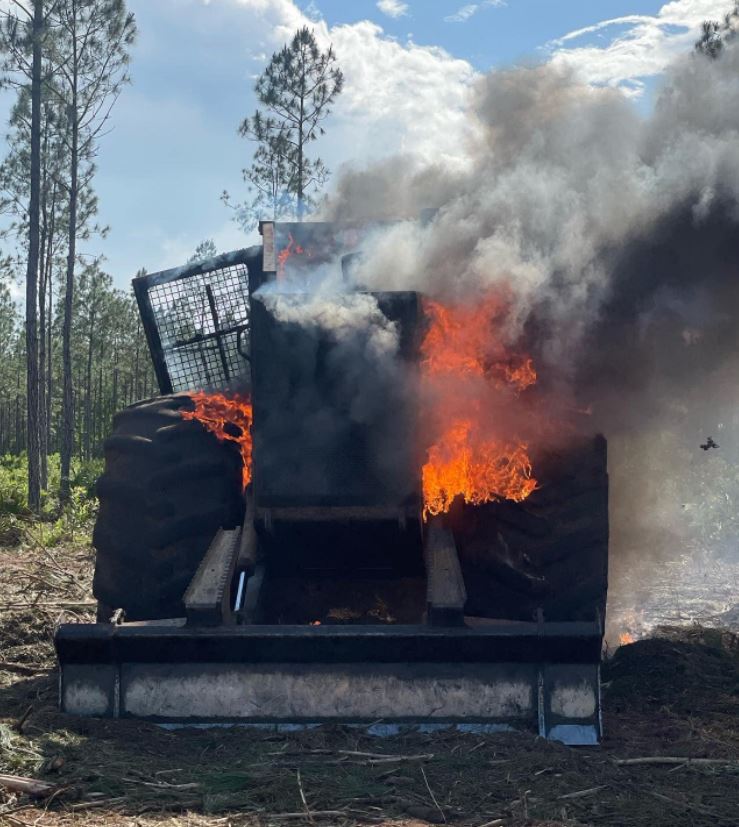Saying 'everyone is responsible for safety' is problematic.

To improve their safety outcomes, some organizations advocate "everyone is responsible for safety."
The thinking behind this is that it will create a universal mindset in their workforce to actively engage everyone, in not only thinking about their own safety but also pay attention to the behaviors and actions of others who may potentially be exposed to the risk of getting injured.
This should increase the attention to safety and minimize the risk of injury due to the concerted grass-roots effort.
The fundamental problem with this thinking is that it is not practical to hold a group accountable for individual behavior.
Possible situational issues
To have an individual tell another worker that they are at risk of getting injured by the way they are engaged in performing the task; or the condition in which they are working in; they have to be sure of some of the following:
- That they perceive some form of hazard exists of which the other is not aware of.
- That the exposure of the worker to the hazard will eventually cause an injuring accident.
- That the observer is certain of their assessment of the situation and has an appropriate suggestion to deal with the issue and resolve the situation.
- Things which may cause the observer to decide not to intervene.
- The observer may assume that the worker is aware of the hazard, the risk is low, and the worker is experienced and capable of working around it. Therefore, gives no warning.
- The observer not knowing the other or may feel less experienced than the worker performing the task and, so say nothing.
- The observer, not knowing the capability of the worker and so feel reluctant to voice concern for fear that the other may ridicule his concern.
- If there are others working in the area, then the observer may assume that one of the other persons present has already alerted or will alert the exposed worker and leave without saying anything.
- If the observer works for a different subcontractor, or in a different trade they may feel they don’t have the authority or the expertise to say something about the situation.
Others present in the area
Many social psychological experiments have demonstrated that individuals may avoid involvement not to indifference but due to others present in the general area.
This is explained by the "diffusion of responsibility" theory.
An individual may assume that since everyone is responsible anyone present may have, or will take the appropriate action.
The end result is that everyone may come to that conclusion and so no one will actually do anything to further the cause of safety. Due to the “bystander effect” diffusion increases with groups over three.
The most graphic example of this is the murder of Kitty Genovese in 1964.
Another reason for inaction involves the principle of social proof.
In situations where we are not sure what the correct action or behavior ought to be, we look to see what others are doing.
In a way, when there is doubt about what a person should do, it becomes a shortcut to deciding what to do.
Other researchers have found that onlookers will tend to be less likely to intervene if the situation is perceived to be unclear, open to interpretation, or enigmatic.
When the other people in the area fail to react, individuals often take this as a signal that any form of action or response is not required.
Impacting safe operations
Workers only control their own action and behavior related to the task.
The supervisor impacts operational functions through planning, organizing, directing, staffing and controlling, as well as risk management.
Therefore, the supervisor can affect the risk of injury more broadly and effectively than any worker.
Integrated planning: is fundamental to construction operations. It is through effective planning that all trades work harmoniously on the work site.
Through effective planning, the project staff can ensure that all the necessary elements required to build the project successfully are devised to effectively deal with the identified potential risks of injuries to the workforce in order to achieve both production and safety goals.
Organizing: Management devises systems (policies and procedures) and oversees operational functions to successfully achieve its goals and objectives.
They assign roles, delineate responsibilities, set standards, and define expectations which fosters communications, specifies productivity, and innovation while holding people accountable, to ensure the work is performed safely as planned.
Directing: The various partners and vendors in the supply chain, as well as the workforce will require direction, coaching, information, motivation and leadership in order to function at optimal levels.
Project managers should empower each person to make decisions, work cooperatively which enhances risk management and problem solving.
Staffing: People are key to performance.
Management selecting the "right" people for the "right" tasks and making sure they are doing the "right" things at the "right" time is fundamental to achieving excellence in safe operation.
They must also be provided with the necessary tools, realistic goals, as well as empowered, enabled, motivated, and encouraged in their activities.
Controlling: Management control systems are tools used to direct the organization toward its strategic objectives.
Control is an important function for ensuring that the organization, operations, or projects are on target to meet all the critical goals and specific deadlines.
Control is an integrated technique for collecting and using information to motivate and direct employee behavior and to evaluate performance.
Safety must be integrated into the overall management control system.
Though not a complete list, these areas should help achieve some improvement with relatively limited effort and disruption to existing operational systems and practices.
This will only be accomplished if the employees trust the organization’s leadership, feel that they are treated fairly, and believe that they are valued.
This fosters job satisfaction that leads to participation and involvement which furthers worksite safety.
Conclusion
Prior to assigning work, risk assessment and management should be implemented as part of operational planning.
It should be integrated into overall management as part of organizing, directing, staffing and controlling of the work, which will go a long way to create a safer work environment.
So, for the statement "everyone is responsible for safety" to become a reality in the sense that everyone actively is involved and striving to create a safe work environment, management has to create the environment, motivate the workforces to be involved and engaged, thereby enabling them to perform their work safely as well as successfully
Product Feature: Operator Compliance Packages

Our Operator Training Packages contain equipment-specific operator material designed for you to administer in-house training for your employees or customers.
This material is available for counterbalanced forklifts, narrow aisle forklifts, powered pallet trucks, rough terrain telehandlers, aerial boomlifts, scissor lifts, front-end loaders, loader backhoes, skid-steer loaders and excavators.
Parlez-vous français? ¿Hablas español? Select packages are also available in French and Spanish..
Incident Report: Company fined over $20k USD after serious forklift injury.

C.C.B. Enterprises Pty Ltd pleaded guilty in the Dandenong Magistrates’ Court on Thursday to a single charge of failing to provide a safe working environment, and a single charge of failing to notify WorkSafe immediately after being aware that an incident had occurred.
The company was fined $35,000 without conviction.
In April 2021, the worker was walking across the warehouse floor when a forklift operated by another worker reversed around a corner and struck him, running over his foot and leg.
The injured warehouse assistant was taken to hospital where he underwent surgery to repair a compound fracture of his leg, multiple fractures of his foot, and muscular damage that required a skin graft.
He suffered post-operative infections and has not since returned to work.
The court heard that the company did not have in place a traffic management plan to separate pedestrians and forklifts, and that it was reasonably practicable for the company to have implemented clearly designated exclusion zones, pedestrian walkways and safety barriers.
WorkSafe Executive Director of Health and Safety Narelle Beer said duty holders will be held accountable for failing to protect workers from the known risks associated with forklifts.
“It’s frustrating that forklift injuries are still so prevalent considering the enormous amount of guidance, information and regulation that occurs,” Dr Beer said.
“WorkSafe will continue doing everything it can to protect workers who work with or around forklifts through inspections, investigations and prosecutions.”
Employers using mobile equipment such as forklifts should ensure:
- A traffic management plan is in place for pedestrians and powered mobile equipment and that it is reviewed and updated as appropriate.
- Pedestrians are separated from moving machinery and that an effective communication system between operators, transport contractors and ground staff is in place.
- Signage is in place and barriers are erected where appropriate.
- Visibility issues are identified and controlled, particularly if lighting is poor.
- Workers operating equipment have the appropriate high risk work licenses, as required.
- Machinery and vehicles are regularly inspected and maintained by a suitably qualified person.
- Employees and health and safety representatives are consulted about health and safety issues.
Ask Bob

Free technical support for all IVES Certified Trainers!
Question:
Hi Bob!
Would you confirm for me that any operator with an expired forklift license should not be operating machinery until re-certified.
Our employer insists that operators with expired Narrow Aisle forklift tickets can still operate the machinery as they have been previously trained and should be able to still use the machinery with an expired license until the company can get them rescheduled.
In this case it is almost two months since expiry.
This issue came up a year ago as well, and the answer was NO but I just need documentation again to show the employer that they are responsible and operators should not be using machinery with expired tickets.
Answer:
Great Question!
Once an operator expires, they are not supposed to operate the equipment until re-qualifications are conducted.
There is no grace period or exceptions offered as outlined by WorkSafeBC.
You can also review your provincial/states regulations for further confirmation.
These documents are also available for download on your Member Dashboard.
Have a great day.
Bob
Interesting Articles
- Worker injuries lead to huge fine for two employers...more.
- Man struck by skid steer loader...more.
- OSHA proposes $793K in fines to contractor for exposing workers to fall hazards...more.
- Man identified after forklift incident takes his life...more.
- Charges filed against construction company after telehandler incident...more.
- Worker killed after being struck by forklift...more.
- Excavator malfunctions and catches fire...more.

Client Testimonials
"

Very informative. Learned new things about training and more importantly how to train people." Marc, Custom Train the Trainer Program.
"Program was very effective and helpful in every aspect of driving a forklift." Michael, Premium Forklift Train the Trainer Program.
"This was my first training with IVES and it was awesome. The classroom and hands-on was a great experience for me." Kevin, Premium Combo Train the Trainer Program.